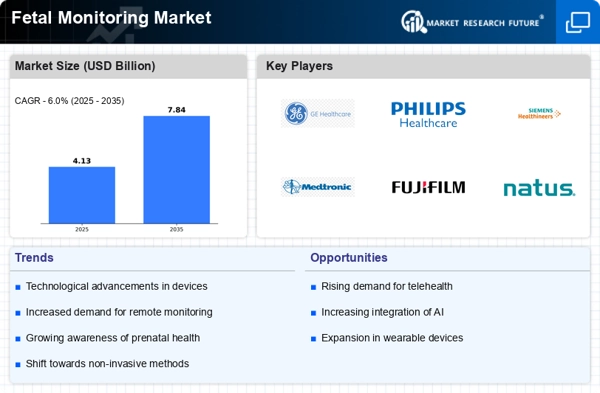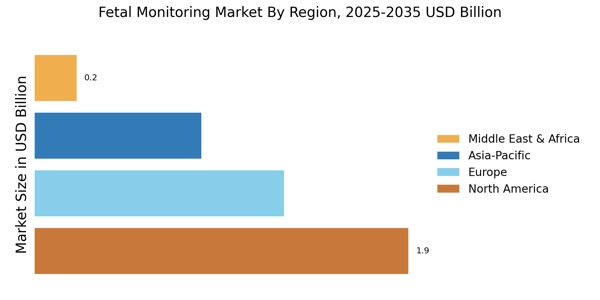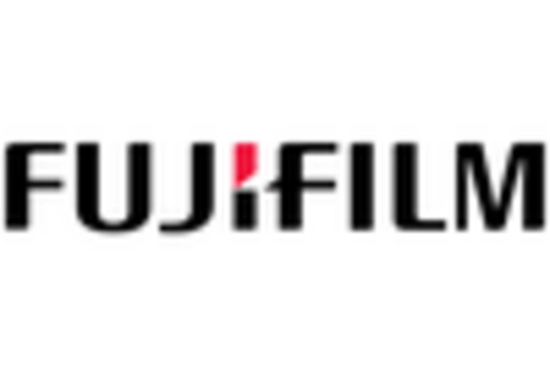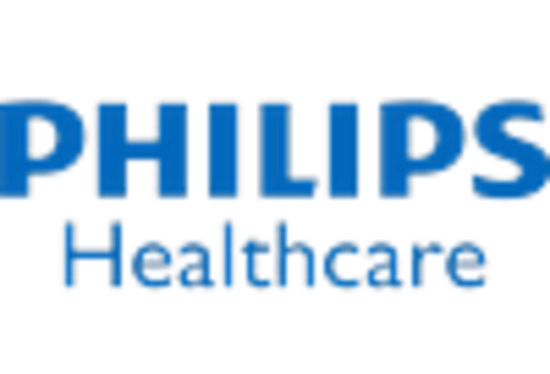Growing Awareness of Prenatal Care Importance
The rising awareness regarding the importance of prenatal care is a crucial driver in the Fetal Monitoring Market. Educational campaigns and community outreach programs are effectively informing expectant mothers about the benefits of regular monitoring during pregnancy. This heightened awareness is likely to lead to increased demand for fetal monitoring devices, as more women recognize the significance of tracking fetal health. Recent surveys indicate that nearly 70% of pregnant women are now more inclined to seek regular check-ups and utilize monitoring technologies. This trend is expected to bolster the Fetal Monitoring Market, as healthcare providers respond to the growing demand for effective monitoring solutions. Additionally, the emphasis on maternal-fetal health education is likely to contribute to improved pregnancy outcomes, further reinforcing the need for advanced fetal monitoring technologies.
Technological Innovations in Fetal Monitoring
Technological advancements play a pivotal role in shaping the Fetal Monitoring Market. Innovations such as wireless monitoring devices, mobile applications, and artificial intelligence are transforming traditional monitoring practices. For instance, the integration of AI algorithms in fetal heart rate monitoring has shown potential in predicting adverse outcomes, thereby enhancing clinical decision-making. The market for fetal monitoring devices is projected to grow at a compound annual growth rate of around 7% over the next few years, driven by these technological innovations. Additionally, the development of non-invasive monitoring techniques is likely to attract more healthcare providers, as they offer improved patient comfort and reduced risks. This trend indicates a shift towards more efficient and effective monitoring solutions in the Fetal Monitoring Market.
Increasing Prevalence of High-Risk Pregnancies
The rising incidence of high-risk pregnancies is a notable driver in the Fetal Monitoring Market. Factors such as advanced maternal age, obesity, and pre-existing health conditions contribute to this trend. According to recent data, approximately 6-8% of pregnancies are classified as high-risk, necessitating enhanced monitoring solutions. This situation compels healthcare providers to adopt advanced fetal monitoring technologies to ensure the safety of both mother and child. As a result, the demand for sophisticated monitoring devices is likely to escalate, thereby propelling growth within the Fetal Monitoring Market. Furthermore, the increasing awareness among expectant mothers regarding the importance of prenatal care is expected to further drive the adoption of these technologies.
Rising Demand for Home-Based Monitoring Solutions
The increasing preference for home-based monitoring solutions is emerging as a significant driver in the Fetal Monitoring Market. As healthcare systems evolve, there is a growing emphasis on patient-centered care, which includes the ability to monitor fetal health from home. This trend is particularly appealing to expectant mothers who seek convenience and comfort during their pregnancy. The market for home monitoring devices is expected to witness substantial growth, with estimates suggesting a rise in adoption rates by over 15% in the coming years. This shift is likely to be supported by advancements in telehealth technologies, enabling remote consultations and continuous monitoring. Consequently, the Fetal Monitoring Market is poised to benefit from this transition towards home-based solutions, enhancing accessibility and improving maternal-fetal health outcomes.
Government Initiatives and Funding for Maternal Health
Government initiatives aimed at improving maternal health are significantly influencing the Fetal Monitoring Market. Various countries are implementing policies and funding programs to enhance prenatal care services, particularly in underserved regions. For instance, initiatives that promote the use of advanced fetal monitoring technologies in public health facilities are likely to increase accessibility for expectant mothers. This focus on maternal health is expected to drive the demand for fetal monitoring devices, as healthcare providers seek to comply with new regulations and standards. Furthermore, increased funding for research and development in maternal-fetal health technologies is anticipated to foster innovation within the Fetal Monitoring Market, ultimately leading to improved monitoring solutions and better health outcomes for mothers and infants.


















Leave a Comment